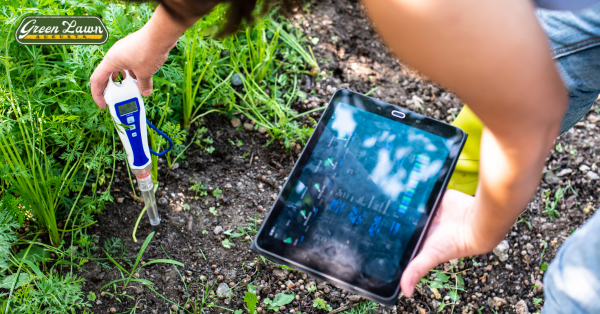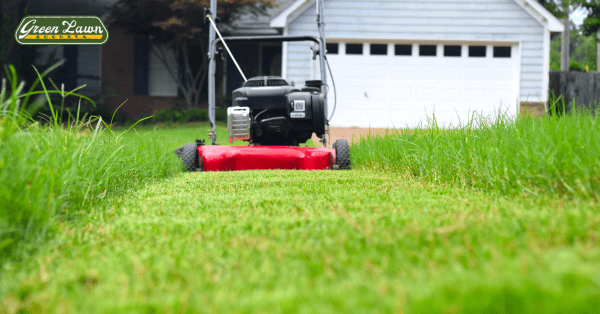The first thing to you should do for your lawn is choose the best grass for your region.
In this lawn care guide for beginners, learn how to take care of your lawn, so that you can have the best yard on the block. A well-manicured lawn is the key to having a beautiful yard. But taking the benefit of professional lawn care services care of your lawn can be a lot of work. From mowing to fertilizing, there are a lot of things that go into keeping your lawn looking its best.
Table of Contents
ToggleMaintain A Healthy Lawn
A healthy yard does not require a lot of lawn maintenance. Test the soil. Fix the main problem. Choose the best grass for your region. Seed right, keep your grass healthy. Defend lawn weeds. Mow Height and a healthy life! Use water systematically.
Choose The Right Grass For Your Lawn

The first thing to you should do for your lawn is choose the best grass for your region, you first need to understand the difference between warm season grasses and cool season grasses.
Warm Season Grasses
For example, Bermuda grass is a grass that is tolerant of both heat and drought, making it a good choice for those who live in warm, dry climates.
Cool Season Grasses
In contrast, Kentucky bluegrass is a grass that thrives in moist conditions and is often used in shaded areas. By understanding the needs of your particular climate, you can choose the type of grass that will best suit your needs.
Test Your Soil’s pH

The pH is an important factor to consider in lawn care when maintaining your lawn. Soil pH that is too acidic or too alkaline can be harmful to plants. The pH can be determined with a soil test. Most garden centers offer services for soil test results.
The pH of Bermuda is typically acidic, around 5. The pH of St. Augustine soil is usually alkaline, around 6. The pH of centipede varies but is generally slightly acidic to neutral.
Different Soil Types
Soil can be classified by texture, which is the size of the soil particles. There are three types of soil textures: clay, sand, and silt. Soil texture is determined by the percentage of each type of particle in the soil.
- Clay soils are sticky and dense because they are made up of very small soil particles. Clay soils hold water and other nutrients well, but they can be hard to work with because they are so sticky.
- Sandy soils are made up of large soil particles. They drain well and are easy to work with but do not hold water or nutrients well.
- Silt soils are made up of medium-sized soil particles. They drain and hold water and nutrients well, but they can be difficult to work with because they can be muddy.
Mow the Right Height

Many homeowners want to ensure a healthy and beautiful lawn, so mowing it at the right height is important. Most grasses should be mowed between 2 and 3 inches high. Mowing too short can damage the grass blades, while mowing too high can make your lawn vulnerable to pests and diseases.
Use Sharp Blades
When mowing, be sure to use a sharp blade and set the grass height to the recommended setting for your grass type. We also recommend mowing in different directions each time to prevent grass clippings from matting down and causing brown patches in your lawn. Mow higher in the summer heat to reduce stress and promote healthy grass.
Mow Your Lawn Regularly
Mowing your lawn regularly is essential for actively growing grass. It will leave grass clippings and organic matter to help retain moisture and nutrients. A thriving lawn that is not mowed regularly can become overgrown and cluttered in a spring lawn care rush, making it difficult for the yard to absorb nutrients from the ground. Mowing your lawn also helps to prevent the formation of weeds, as well as insect pests and diseases.
Don’t Overwater
When it comes to watering your lawn, less is more. Watering your lawn every day will only result in shallow grass roots, which will make your lawn more susceptible to drought and other weather conditions. Instead, try watering your lawn once or twice a week and make sure to water deeply to promote deep roots.
Get Rid Of Weeds
Weeds can be pesky little plants that are hard to get rid of. Here are a few lawn treatment service tips to help you get rid of them:
- Pull them out by the roots. This is the most effective way to get rid of any weed, and it’s also the most labor-intensive.
- Use a selective herbicide. There are many different types of selective herbicides available for grassy and broadleaf weeds, so be sure to choose the weed killer that is appropriate for your lawn.
- Mulch your flower beds. Laying mulch 2″ – 3″ deep will help to keep the weeds from growing in your flower beds.
- Keep your lawn well-manicured. They love to grow in tall grass and overgrown areas; reducing the number of weed seeds that can germinate in your lawn will help to reduce the number of weeds you have to deal with.
Prevent Weed Growth
Weeds can be a major problem for lawns, invading and choking out the grass. There are a few things you can do to help prevent weed growth in your lawn:
- Keep your lawn healthy and well-maintained. Weeds prefer to grow in areas that are overgrown or neglected, so keeping your on a maintenance schedule will help keep them at bay.
- Use a pre-emergent if they do manage to take hold; using a pre-emergent can help prevent weeds when applied at the right time. Be sure to read the instructions carefully, and always follow the safety precautions.
- Mulching your lawn clippings help suppress weed growth by preventing light from reaching the soil. It also helps keep the soil moist, which weeds don’t like.
When To Fertilize
Fertilizing your lawn is another important thing you can do for your lawn. Applying fertilizer in the growing season, early summer, helps promote growth and keeps your grass green and healthy.
When fertilizing, be sure to use a fertilizer that is specifically designed for your grass type. Check the label for how much fertilizer to use. Green Lawn Augusta also recommends using a slow-release fertilizer so that you don’t have to fertilize as often when you fertilize your lawn.
Best Time To Spread Grass Seed

The best time to seed your yard is in early spring, after the last frost or early fall. This ensures that the ground is warm enough for the seedlings to take root, but not so hot that they will dry out.
When seeding new or bare spots, it is important to spread the seeds throughout the lawn evenly and water them frequently, giving them plenty of room to grow. Once the seedlings have sprouted, they will need to be watered frequently to ensure that they do not dry out. Avoid mowing until the grass has been established for at least 4 – 6 weeks.
Winter grass types can also be done in late fall shortly after mowing season. This is done by removing any dead or damaged grass, then aerating and raking. Aerating removes plugs reducing soil compaction and thatch and helps with germination in early or late spring and fall.
Keep Your Grass Green In Summer Heat
One of the best ways to keep the grass healthy and green in the summer is by using a fertilizer with soil amendments such as kelp, humic and fulvic to help retain moisture helping with uptake of available nutrients. The general rule is to water early morning for at least 30 minutes in the morning once or twice a week, depending on the size of your yard. Frequent watering during dry spells can make your grass susceptible to a fungus.
Talk to Us
You don’t have to allow weeds to control your lawn. Instead, get Green Lawn Augusta provides organic lawn care to help prevent or eliminate weeds by reaching out to our team. We use our experience to develop a personalized weed control plan for your property.

